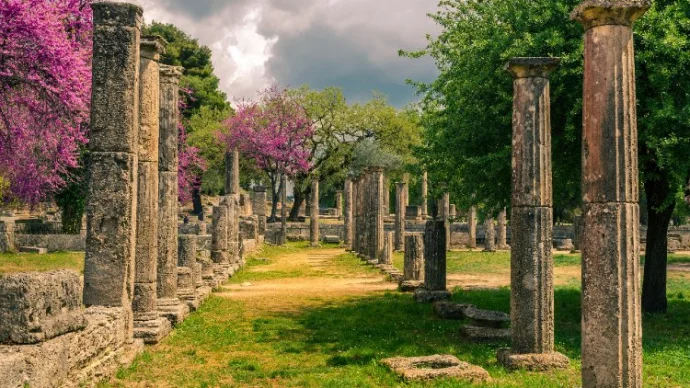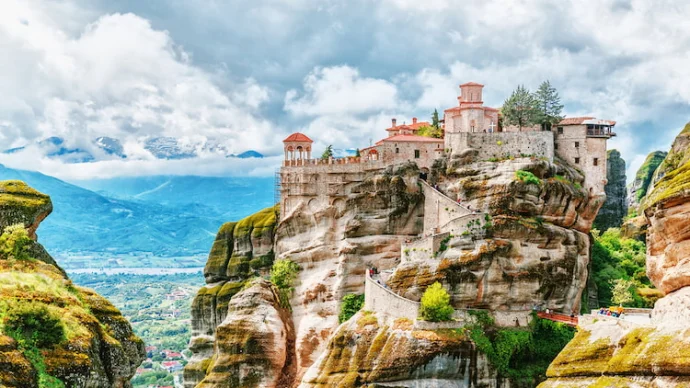
About Acropolis of Rhodes
The Acropolis of Rhodes is the site of the main remains of what was the city of Rhodes in the Hellenistic period.
Containing several different sites, including temples, monuments and public buildings, the Acropolis of Rhodes represents the main ancient site in the city, dating to mostly the third and second centuries BC.
Amongst the things to see at the Acropolis of Rhodes, there are impressively reconstructed sites such as an odeon and theatre as well as the ruins of the Temple of Apollo.
Acropolis of Rhodes history
The site of the ancient Hellenistic city of Rhodes stretches up the slopes of Monte Smith Hill a kilometre west of the Old Town. In the past, the Acropolis of Rhodes overlooked the western part of the city and unlike most other ancient Acropolis, it was not fortified.
The Acropolis of Rhodes featured Sanctuaries, huge temple premises, and public buildings. The buildings were strategically built on precipitous terraces that were ably supported by impregnable walls. The Acropolis of Rhodes is one of the finest specimens of the Hellenic style of architecture that blended harmoniously with the surrounding environment.
The key monuments in the archaeological zone of the Rhodes Acropolis are the Temple of Athena Polias and Zeus Polieus, the Nymphaia, the Odeion, the Temple of Pythian Apollo, the Stoa building, Artemision, the Ancient Stadium of Rhodes, the Gymnasium, and the Library.
In antiquity, the population of the city was supposedly larger than that of today and extended over the eastern slopes of Aghios Stephanos, which was later also known as the hill of Monte Smith, named after the English admiral Sir Sidney Smith who established an observation post in 1802 to watch over the movements of the Napoleonic fleet in 1802, right down to the city harbour.
The excavations of this site were carried out by the Italian Archaeological School during the Italian occupation of the island between 1912-1945. From 1946 onwards the Greek Archaeological Service conducted excavations which added to existing knowledge of the history and topography of the place.
There is still a significant amount of the Acropolis that are yet to be excavated. An archaeological zone of 12,500 m² has been excluded from contemporary building with the intention of continuing excavation works to uncover the ancient city of Rhodes.
The Temple of Pythian Apollo suffered considerable damage from bombing in World War Two and underwent restoration work in the 1960s and 1970s. In 1996 further reconstruction was carried out on the temple and the Nymphaia.
Acropolis of Rhodes today
This UNESCO-listed medieval town is a great place to explore. The current findings represent only a fragment of the original grandeur of the ancient city of Rhodes. The Temple of Pythion Apollo stands at the summit of the Acropolis with breathtaking panoramic views of the city and the sea.
Getting to the Acropolis of Rhodes
The acropolis is at Monte Smith Hill, Rhodes City. The site can be reached on city bus 6, or by walking along Komninon and Diagoridon from St Athanasius Gate at the southwest corner of the Old Town.
Featured In

Ancient Greek Ruins
Immerse yourself in classical history by stepping into the world of Ancient Greece. Here's our pick of 10 essential sites to visit.

Greece Historic Sites
Alongside its contributions to philosophy, astrology, and medicine, Greece's sites from classical antiquity have stood the test of time. Here are 10 must-see sites for any visiting history enthusiast.




















